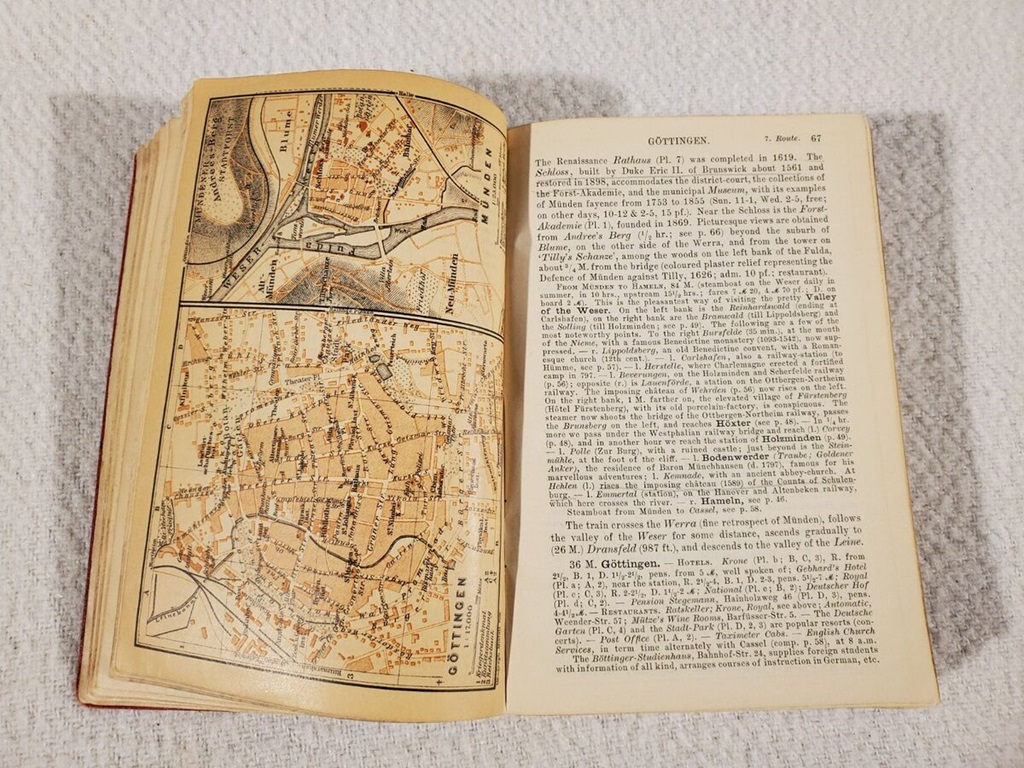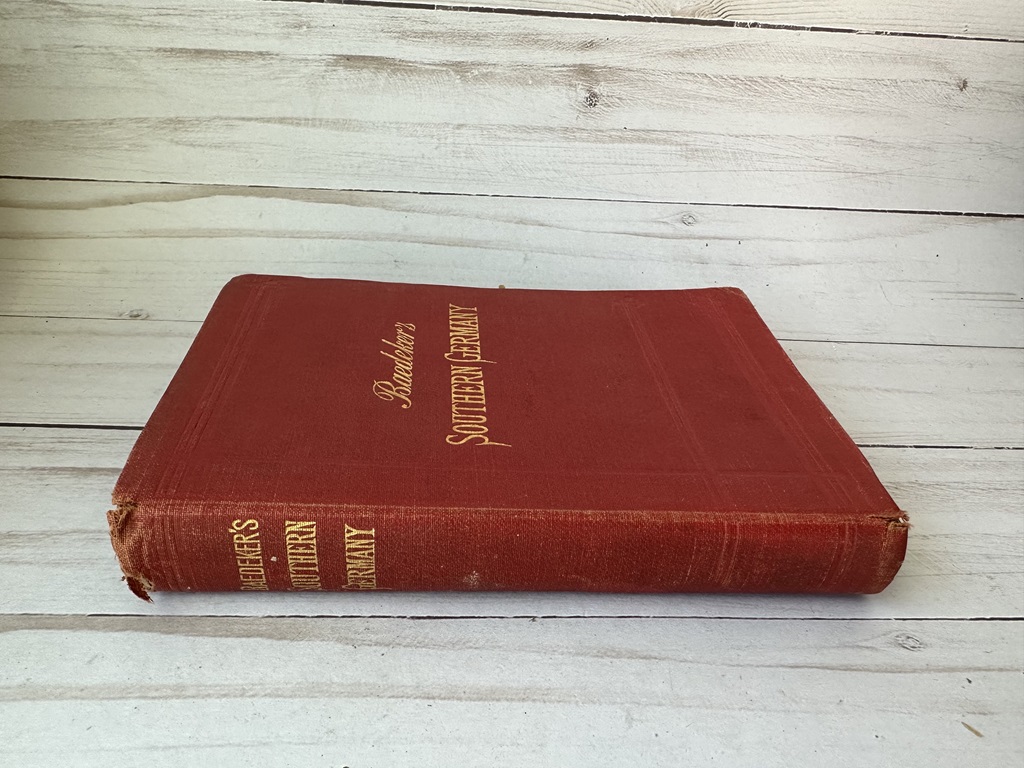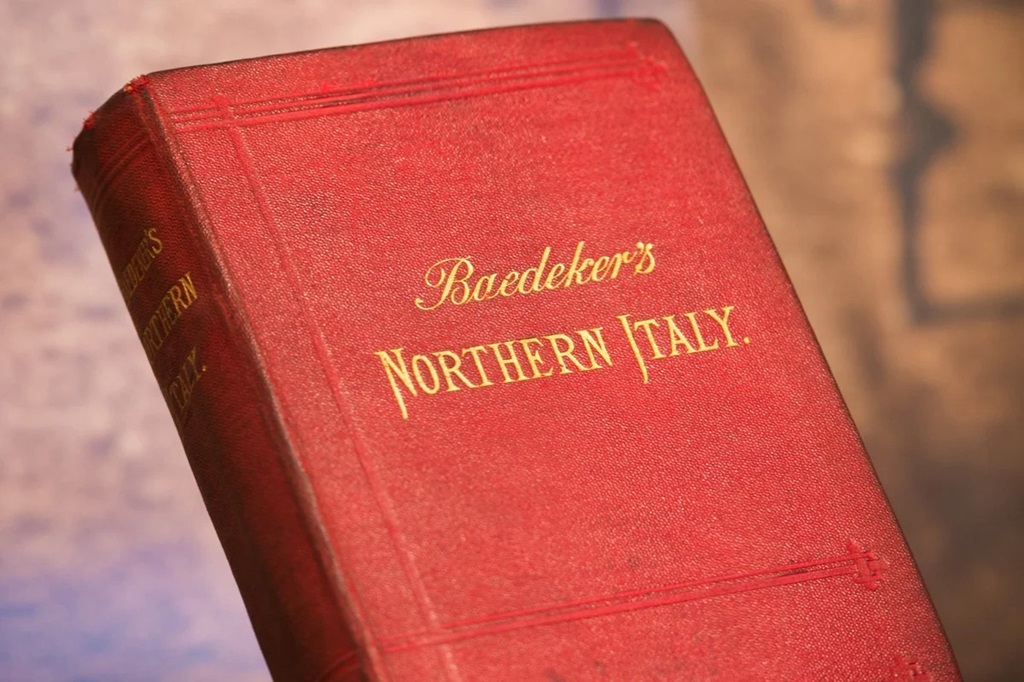For over 150 years, the name “Baedeker” has been synonymous with travel guidebooks. Baedeker guides, often simply called “Baedekers,” were the premiere travel guides used by millions of travelers starting in the mid-19th century. They set the standard for modern-day guidebooks, influencing everything from the content and format to the iconic star rating systems still used today.
The story of Baedeker guidebooks is the story of one family – the Baedekers of Germany. Their guidebooks inspired mass tourism and shaped how people traveled for decades. Let’s take a journey through the history of Baedeker guides and how they changed tourism forever.
The Early Days of Baedeker Guides
The Baedeker publishing dynasty began with one man: Karl Baedeker. Born in 1801 in Essen, Germany, Karl spent his early career as a bookseller and publisher. He gained an interest in travel guides after taking a trip to Paris. Dissatisfied with the poor quality travel guides available at the time, Karl saw an opportunity.
In 1832, Karl Baedeker self-published a guidebook called “Rheinreise von Strasburg nach Koblenz” about a trip down the Rhine River. It included details on attractions, hotels, restaurants, distances, and more. Importantly, it also contained detailed maps – a novelty for travel guides at the time.
The book was a hit, selling out rapidly. Karl had tapped into a major need – clear, accurate travel information for the growing numbers of middle-class travelers visiting Europe’s tourist destinations.
To meet demand, Karl Baedeker quit bookselling and focused entirely on travel guides. He soon released guides to Switzerland, Belgium, and Northern Italy. Baedeker guides quickly became the go-to travel resource across Europe.
Baedeker’s Key Innovations
What set early Baedeker guides apart was Karl’s innovative ideas. His guides introduced several key features still found in today’s guidebooks:
Detailed Maps
Early Baedekers contained highly detailed maps. This allowed travelers to accurately navigate cities and regions independently – a major advantage over unreliable tours and guides.
Star Rating Systems
Baedekers pioneered the star rating system, using stars to indicate points of interest as well as restaurants and hotels. More stars indicated greater importance or luxury. This shorthand made planning easy for travelers.
Train Timetables
Baedekers included comprehensive train schedules and transit information. With rail expanding rapidly, this allowed travelers to plan trips using the growing rail networks.
Condensed Information
Karl Baedeker devised a condensed writing style that gave only the most essential details without lengthy descriptions. This practical approach delivered just what travelers needed.
Objective Advice
Previous guidebooks were often promotional pieces by local businesses. Baedeker guides offered objective advice and didn’t take advertising. This gave readers trustworthy recommendations.
Taken together, these innovations made Baedeker guides invaluable planning tools for travelers. They could plan entire trips using just a Baedeker guide. This ushered in a new era of independent tourism.
Expansion Across Europe
The disruptive success of Baedeker guides soon made them ubiquitous across Europe. Every year Karl expanded coverage to new regions like a meticulous cartographer mapping uncharted lands.
Baedekers were translated from the original German into English, French, and Italian. Sales skyrocketed. By the 1870s, over 65 Baedeker titles were available across Europe. Global distribution deals brought Baedekers to international markets.
Karl also focused on continually updating the existing guides each year. Research teams were hired to travel anonymously and gather current information. This ensured the famous accuracy and reliability of the guides.
The “red books” were a common sight wherever tourists went, carried in pockets and bags as the essential item for travelers. To visit Europe without a Baedeker was seen as unwise, if not unthinkable. They were guidebooks for the aristocrats and explorers alike.
Baedekers and Mass Tourism
Baedeker guides fueled the rise of mass tourism during the mid to late 1800s. Many give them credit for turning tourism into a popular leisure activity for the rising middle classes.
By providing independent travelers with the tools they needed, the guides made tourism accessible to ordinary people. Standardized hotel and restaurant ratings, maps, prices and itineraries let people plan affordable trips beyond the traditional aristocratic Grand Tour.
The adaptable pocket format and condensed guides were perfect for train travel, which was expanding rapidly during this period. Rail companies soon realized promoting travel and Baedeker guides together boosted customers for both industries.
The Baedekers inspired a wandering spirit and culture of DIY travel that remains today. For many, traveling with “Baedeker’s Guide” was seen as a rite of passage. It gave travelers the freedom to roam wherever their curiosity led.
The Baedekers Expand Worldwide
As tourism grew globally, a new generation expanded Baedekers farther than Karl likely ever imagined. His son, Fritz Baedeker, took over the company in 1859 and ambitiously pushed into new regions like Russia, Scandinavia, Spain and Portugal.
But Fritz’ son, Karl Baedeker Jr, made the biggest leap – across the seas to new continents. In the late 1890s, he released the first Baedeker guides to the United States and Canada, Egypt and Palestine. Detailed exotic locales like India, Ceylon, Bali and New Zealand soon followed.
For European travelers, these international Baedekers opened up a whole world of destinations now within reach. The spirit of adventure and discovery these guides inspired remains with travelers today.
The Baedeker Dynasty
For over a century, Baedekers remained a family company passed through generations who expanded the business worldwide.
- 1801: Karl Baedeker was born in Essen, Germany
- 1832: Karl Baedeker publishes his first guidebook, “Rheinreise von Strasburg nach Koblenz”
- 1859: Karl’s son Fritz Baedeker inherits company
- 1869: Fritz’s son Karl Baedeker Jr is born
- 1923: Karl Jr inherits company after Fritz dies
- 1943: Bombs destroy the Baedeker offices and archives in Leipzig during WWII
- 1948: Karl Jr dies; company sold after being in Baedeker family for over 100 years
At their peak from the 1860s to early 1900s, Baedekers were the world’s leading travel guide publisher. Their influence on travel was immense – both how people traveled and where they went.
For generations, touring and traveling with a Baedeker guidebook had been a rite of passage and essential part of the tourist experience. But the destruction of WWII and changing world would soon bring major challenges.
Challenges After World War II
The aftermath of WWII delivered a one-two punch that left Baedeker reeling.
First, the Baedeker headquarters in Leipzig, Germany was bombed in 1943, destroying irreplaceable archives and printing plates. This dealt a huge blow to the company’s operations in postwar Germany.
At the same time, global geopolitics were shifting rapidly. Colonization was ending as former colonies in Asia and Africa gained independence. The outbreak of the Cold War closed off Eastern Europe from the West.
These changes made much prewar travel content outdated overnight. And economically devastated Germany meant fewer Germans traveling abroad after the war.
Baedekers were too slow to adapt to the quickly evolving world. No longer the definitive travel resource, their popularity and sales declined. Other upstarts began outpacing the old dynasty.
The End of the Dynasty
After over 100 years as a family company, Karl Baedeker Jr. ultimately decided to sell the struggling Baedeker firm in 1948. It was acquired by Langenscheidt Publishing Group and British publisher Arthur Legendre.
The company changed hands several more times in the decades that followed. Ownership often depended on mergers and acquisitions between publishing houses over the chaotic postwar years.
During this period, the company limped along trying to revitalize the brand with updated guides. But it was never quite able to recover the dominant status it previously enjoyed.
Baedeker did manage to continue publishing updated travel guides focused mainly on destinations in Europe and Germany. To this day, the Baedeker name still appears on guidebooks produced by the current owner, Mairs Geographischer Verlag.
But the Baedekers and their meticulous research were long gone. The exponential growth in travel after the 1960s saw the rise of new guidebook publishers like Lonely Planet and Rough Guides.
Still, for over a century, it was the Baedekers who paved the way for these modern guidebooks and forever changed how we travel.
The Legacy of Baedeker Guides
Looking back, it’s clear no guidebook has had greater impact on travel than Baedeker. They set the blueprint for the modern guidebook format we now take for granted.
Beyond how we use guidebooks, Baedeker influenced what we seek in travel itself – independence, adventure, culture, spontaneity. For generations, Baedekers instilled those values in travelers long before mass tourism took hold.
It’s not an exaggeration to say Baedekers helped shape tourism into what it is today. Countless travelers over the past 150 years have Karl Baedeker’s family and their iconic red guidebooks to thank for inspiring their journeys.
So as travelers, we owe them our enduring gratitude and respect. Baedekers changed how we see the world – both then and now.
Conclusion
For over a century, Baedeker guides set the standard for travel information and inspired generations of independent travelers. Karl Baedeker capitalized on new opportunities in the growing tourism industry by innovating the modern guidebook format. His family continued expanding these indispensable travel companions to destinations around the world.
Baedeker guides ushered in an era of mass tourism but also a spirit of adventure, cultural curiosity and spontaneity. The impact they made on tourism is still felt today in the DNA of guidebooks and the passions of travelers. The Baedekers left an indelible imprint on how we explore the world.
Frequently Asked Questions
Who wrote the first Baedeker guidebook?
The first Baedeker guidebook was published in 1832 by Karl Baedeker Sr. Titled “Rheinreise von Strasburg nach Koblenz,” it provided information about traveling down the Rhine River in Germany.
What made Baedeker guides different from earlier guidebooks?
Baedeker guides introduced innovations like star ratings, detailed maps, objective advice, and condensed writing style. Previous guidebooks were often unreliable or sponsored. Baedekers set a new standard for usefulness and accuracy.
When were the peak years of popularity for Baedeker guides?
Baedeker guides were most popular from the mid 1800s to early 1900s. During this era, they were the premier travel guides used by tourists across Europe and later worldwide. At their peak, over 65 different Baedeker titles were published.
Were Baedeker guides the first travel guides?
No, travel guides existed before Baedekers, some as early as the 1600s. But early guides were not as systematically researched, detailed or accurate as Baedekers. Baedeker standardized the format of informative, objective guidebooks as we know them today.
Why did Baedeker guides decline after World War 2?
Several factors caused the decline. War damage destroyed Baedeker archives and operations. Global political shifts after the war made guide content outdated. New competitors appeared. These changes disrupted the previously dominant status of Baedeker guides over several decades.




